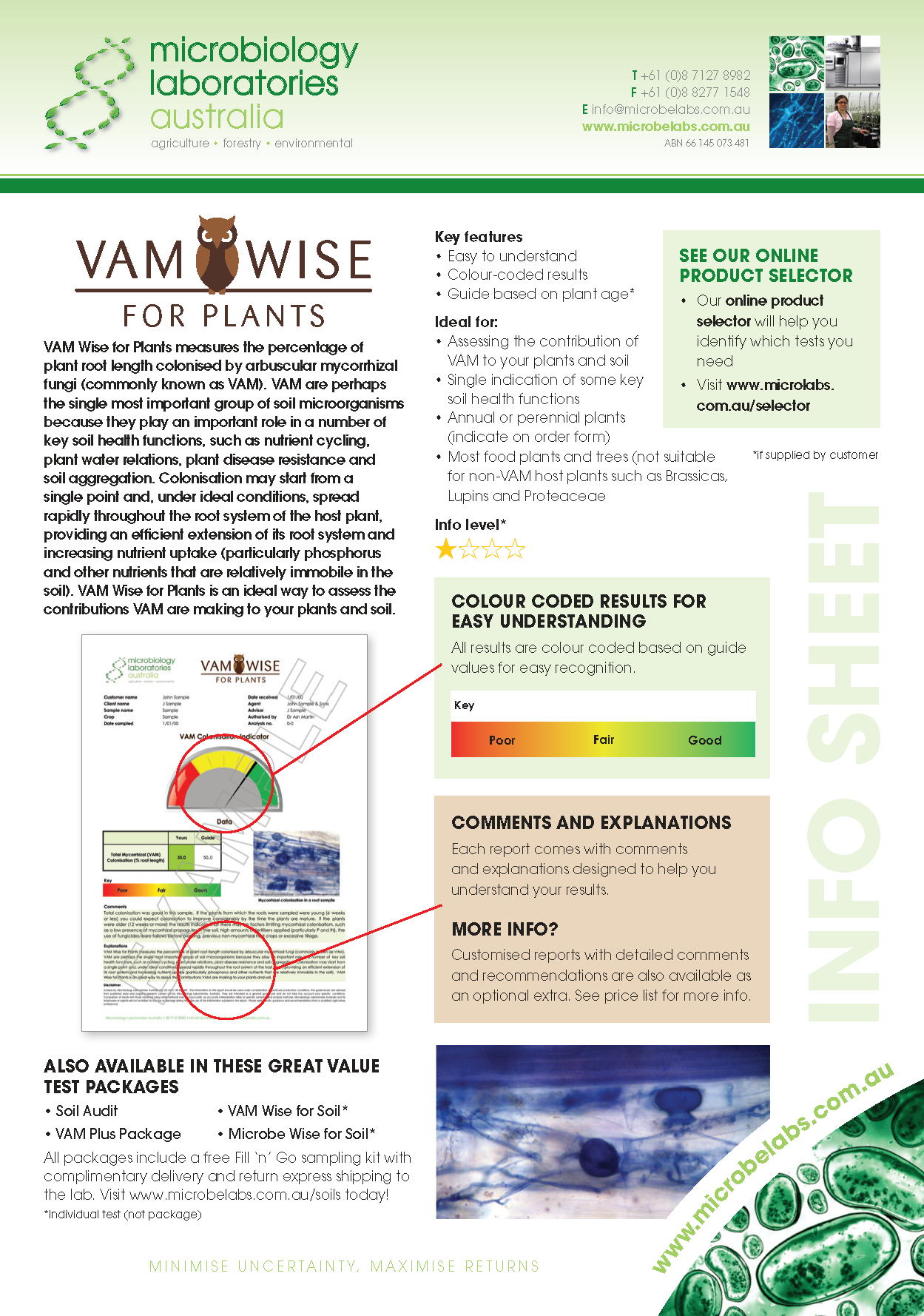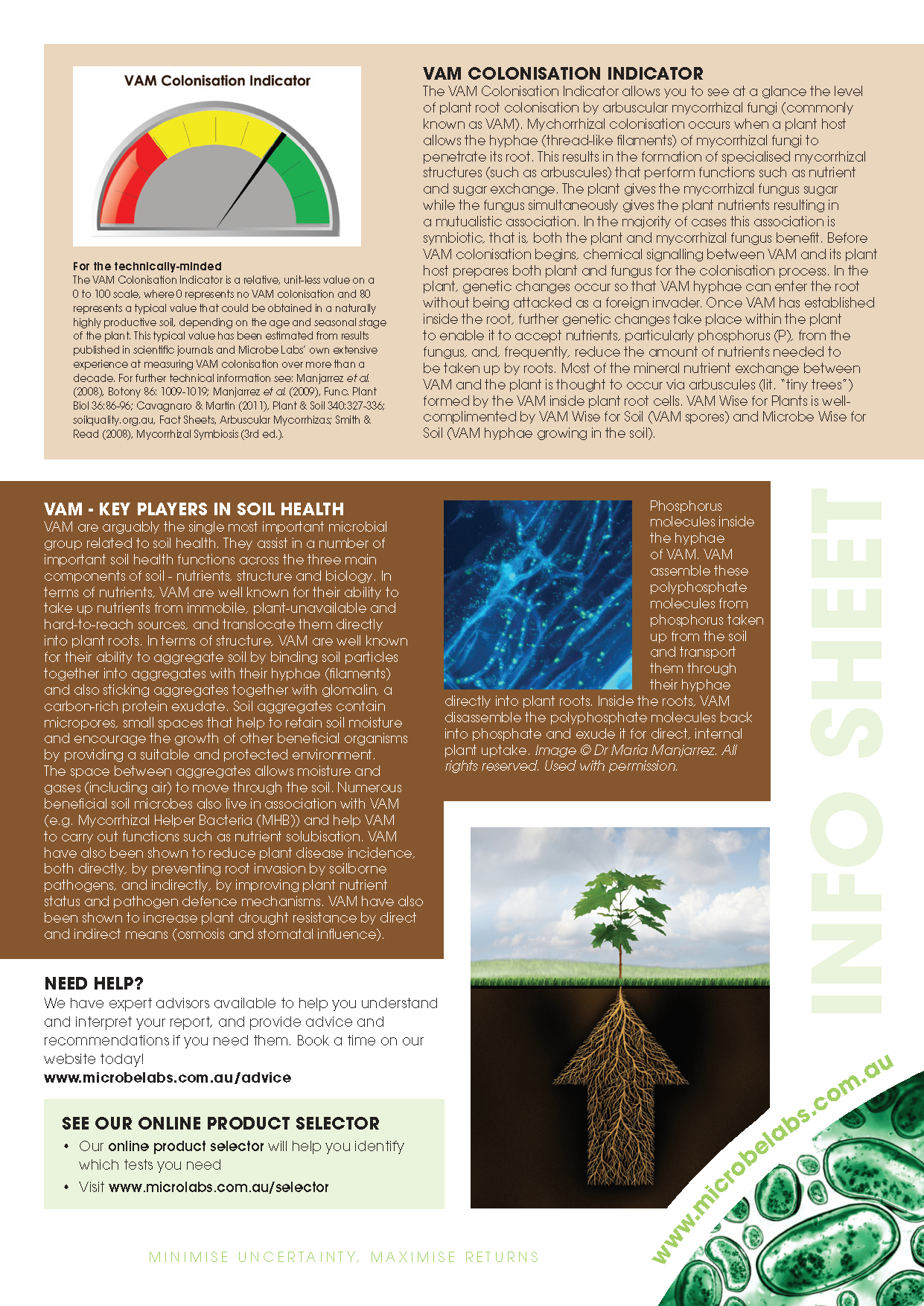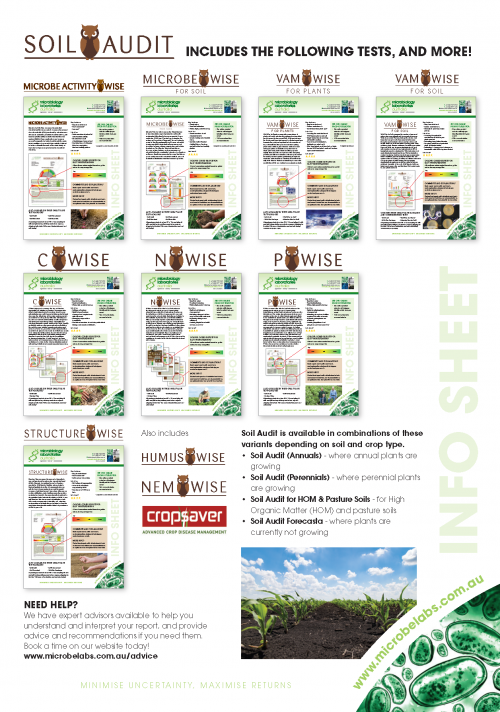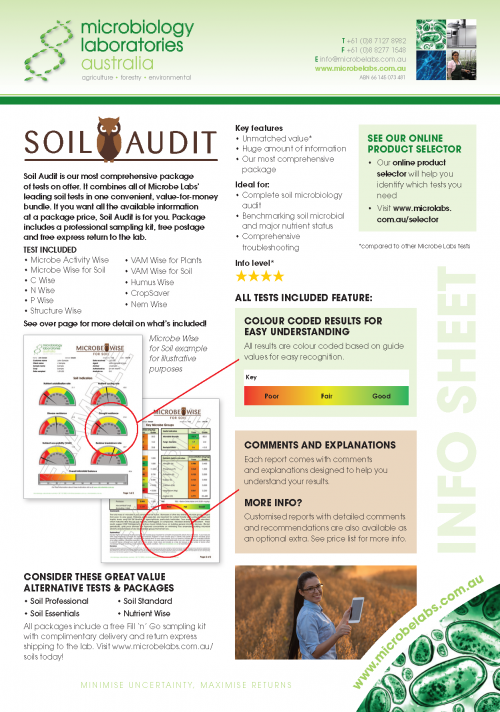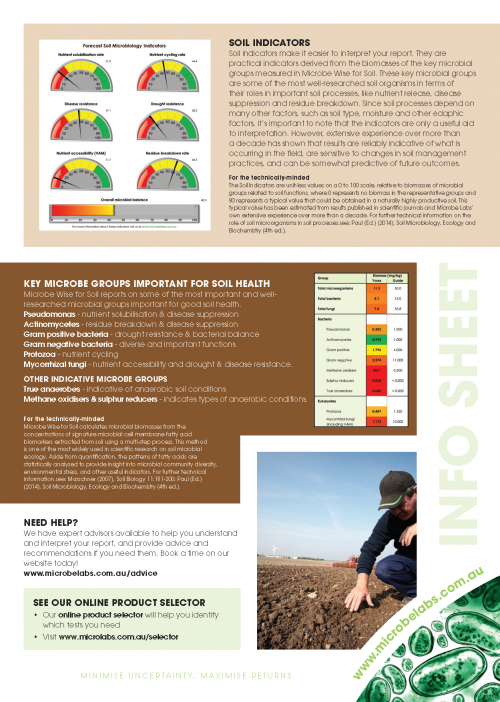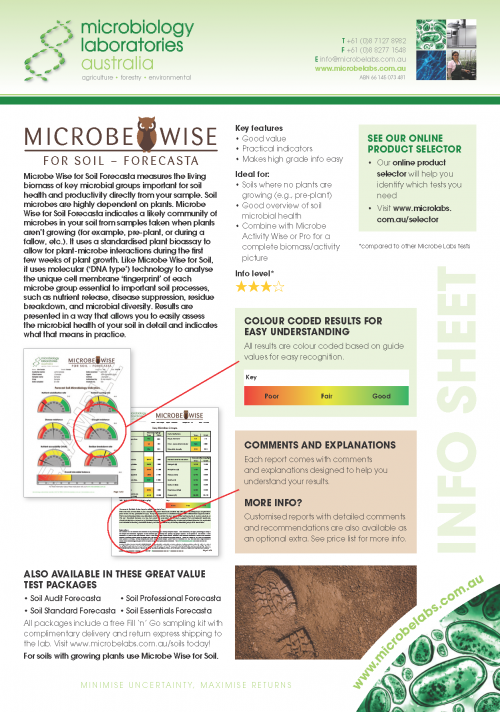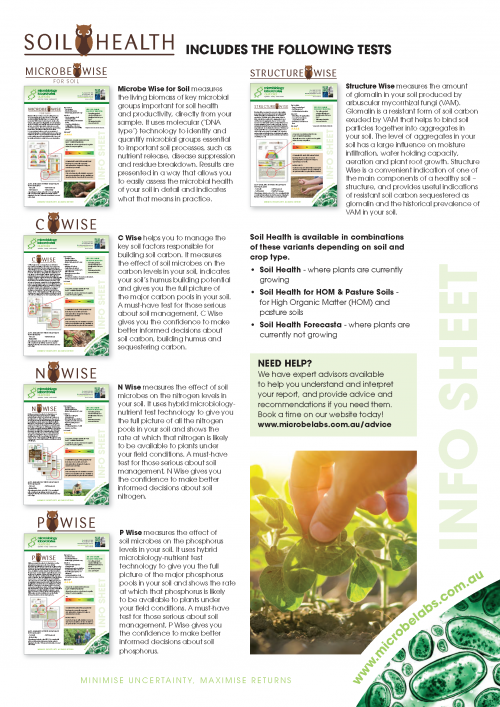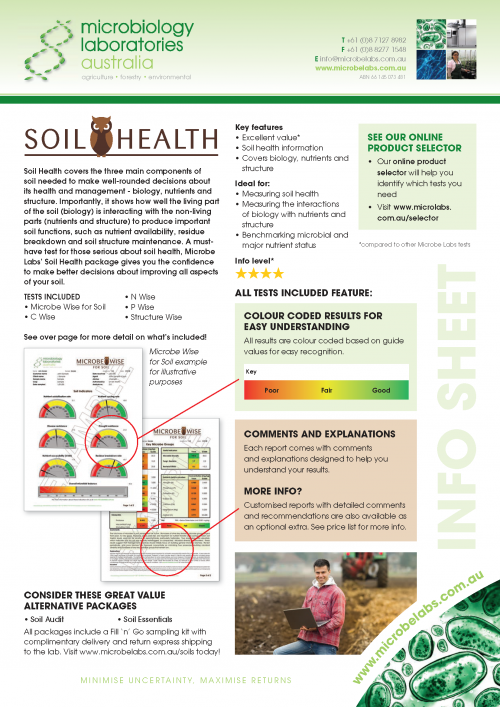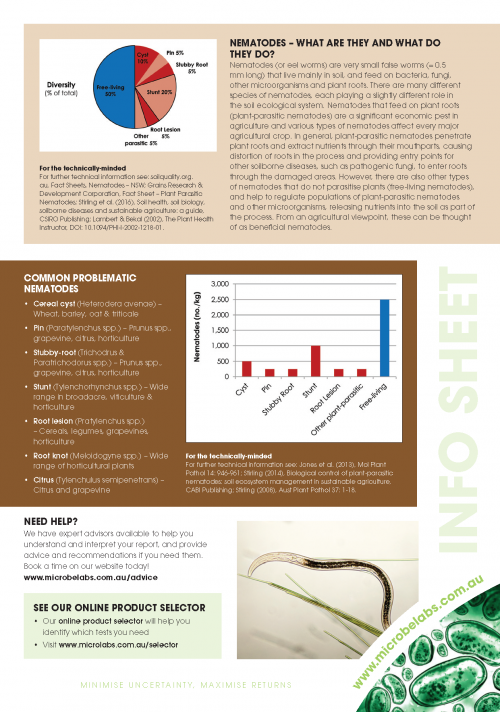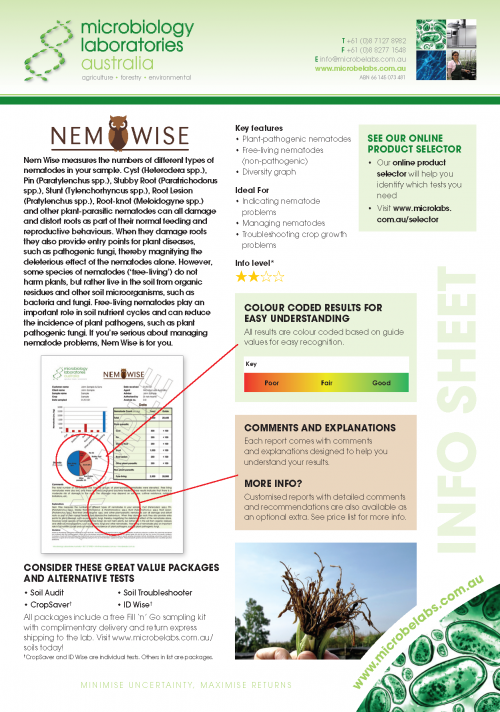Description
VAM Wise for Plants (Perennials)
VAM Wise for Plants measures the percentage of plant root length colonised by arbuscular mycorrhizal fungi (commonly known as VAM). VAM are perhaps the single most important group of soil microorganisms because they play an important role in a number of key soil health functions, such as nutrient cycling, plant water relations, plant disease resistance and soil aggregation. Colonisation may start from a single point and, under ideal conditions, spread rapidly throughout the root system of the host plant, providing an efficient extension of its root system and increasing nutrient uptake (particularly phosphorus and other nutrients that are relatively immobile in the soil). VAM Wise for Plants is an ideal way to assess the contributions VAM are making to your plants and soil.
VAM Wise for Plants (Perennials) is specifically designed for root samples from perennial plants that are hosts to VAM. Most agricultural plants and food trees are VAM hosts. Some notable exceptions are shown in the list below. If annual plants are currently being grown opt for VAM Wise for Plants (Annuals).
Want a sampling kit? Our Sampling Kit – Soil + VAM Wise for Plants (Roots) has everything you need to take your samples for VAM Wise for Plants easily and correctly and get them to the lab in the best condition, including return express freight to the lab. Don’t want a sampling kit? See our Sampling Instructions for how to sample, pack and send your samples to the lab.
Key features
- Easy to understand
- Colour-coded results
- Guide based on plant age*
Ideal for
- Assessing the contribution of VAM to your plants and soil
- Perennial plants that are VAM hosts
- Single indication of some key soil health functions
- Measure of perhaps the single most important soil microbial group
Plants that are NOT VAM HOSTS (VAM Wise for Plants is not suitable for plants in this list):
- canola and other brassicas (cabbage family)
- lupins
- beets and spinach
- amaranths
- hazelnut
- some ornamental plants, including those in the protea and mesembryanth families
*if supplied by customer



